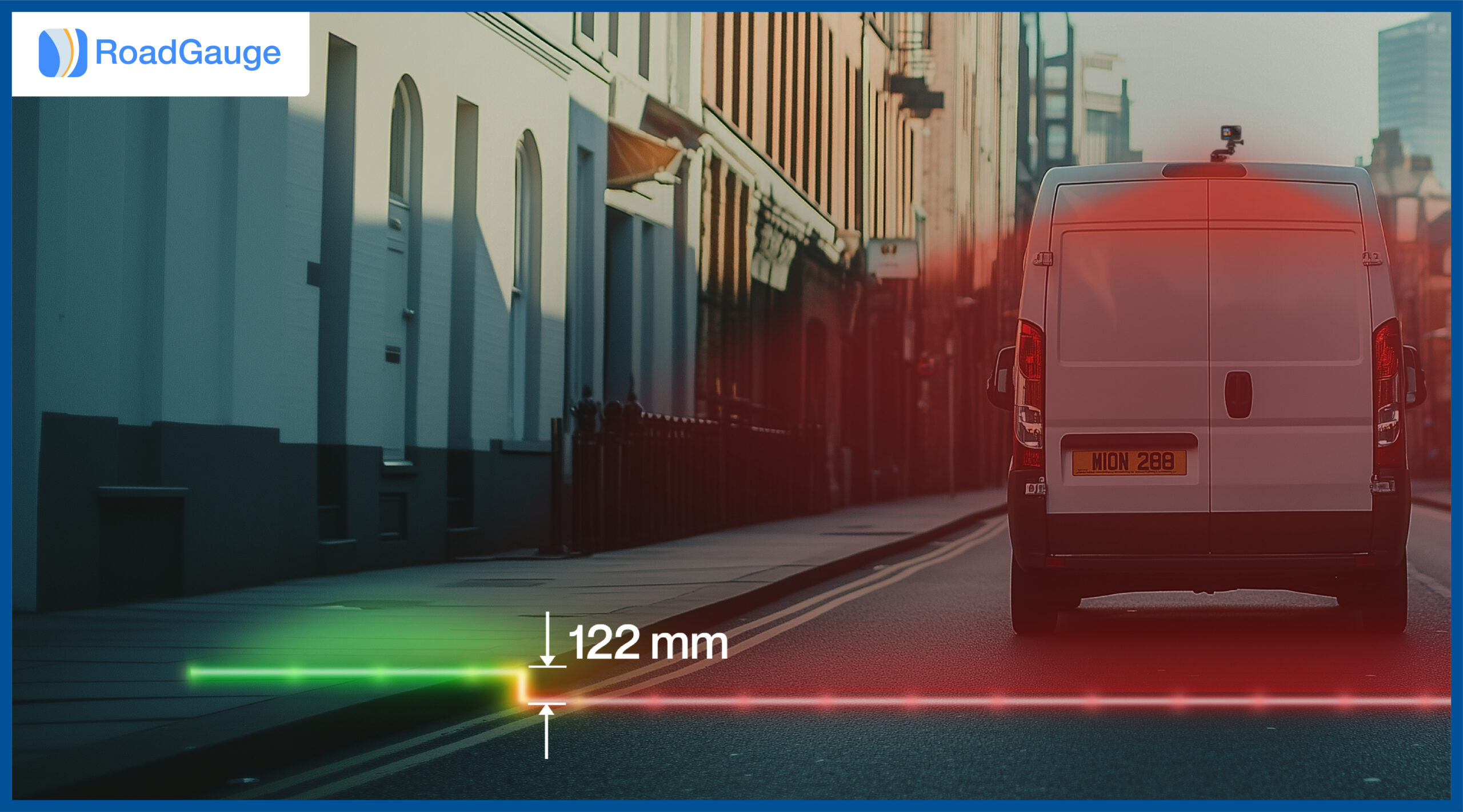
Kerbs play a fundamental role in road and pavement design, serving as both a physical boundary and a structural element. They define the edge of the carriageway, support adjacent surfaces such as footpaths and verges, and assist in directing surface water into the drainage system. In urban settings, kerbs contribute to the safe organisation of shared spaces by guiding pedestrian and vehicular movement, delineating areas for parking, and providing a degree of containment for vehicles.
During road condition assessments, kerbs can reveal early signs of broader pavement or drainage issues. Misaligned, cracked, or deteriorated kerbs may indicate problems such as pavement edge failure, poor sub-base support, or inadequate water runoff. Because kerbs mark the intended limits of the carriageway, their condition and placement also help assess changes in road geometry, surface uniformity, and drainage effectiveness over time. Their visibility and alignment can serve as practical reference points for inspections.
One often overlooked issue is the gradual reduction in effective kerb height caused by repeated road resurfacing. Each new asphalt layer raises the road surface slightly, reducing the kerb’s protrusion above the carriageway. Over time, this can diminish its ability to guide water into drainage systems, limit its effectiveness as a safety barrier, and cause accessibility concerns—especially at pedestrian crossings. To maintain kerb functionality, road maintenance teams may mill down the existing surface before resurfacing or, in some cases, raise the kerbs themselves. As such, kerbs remain a critical element not only in road design but also in long-term asset management and maintenance planning.
This is exactly what our RoadGaugeAI software enables you to do. The visual below shows the kerb height measurement from a GoPro video by RoadGaugeAI. The RoadGaugeAI software is available on the web. You can access it from anywhere in the world, at all times! Contact us at info@roadgauge.ai for sample projects and a free trial.


